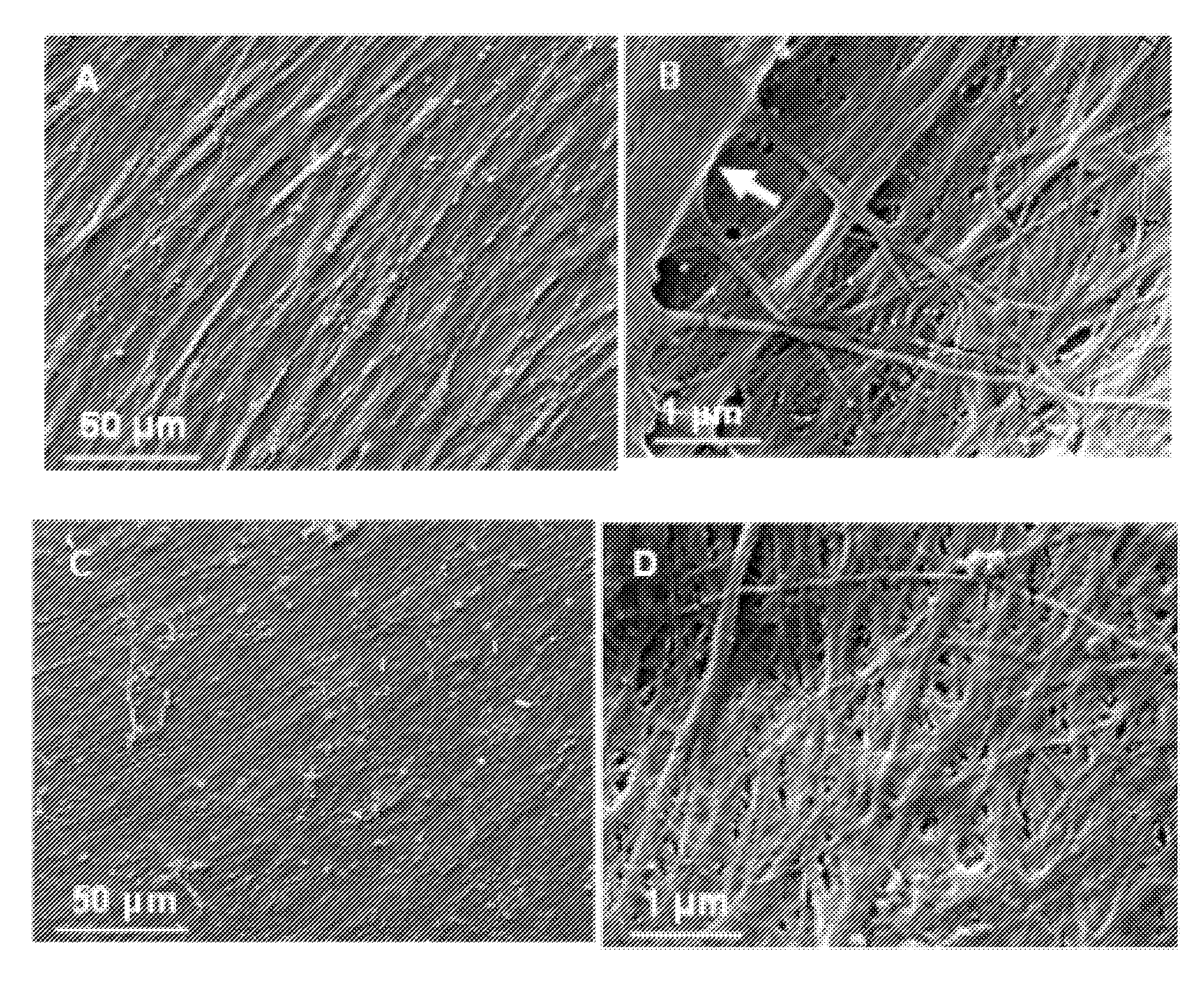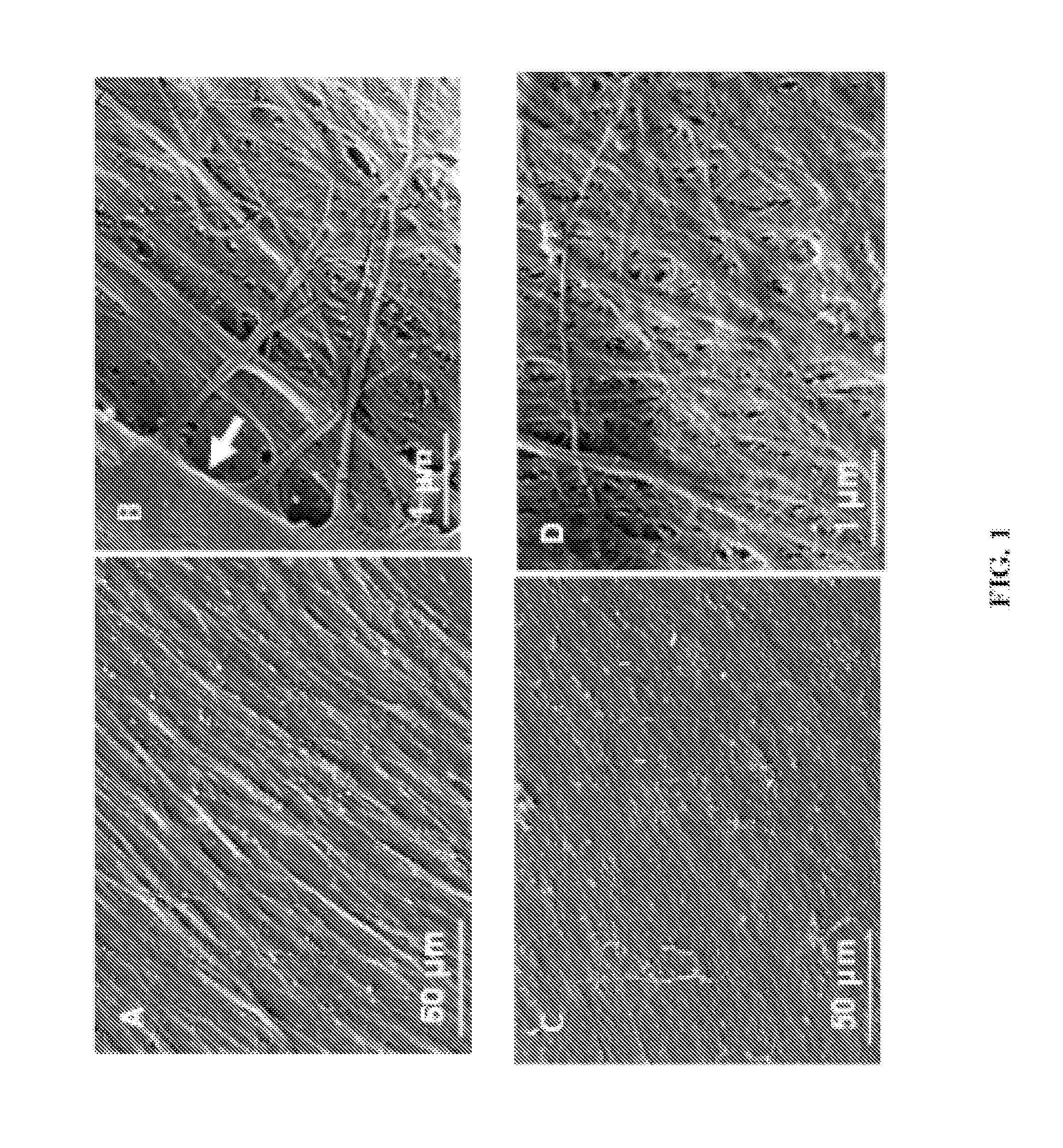Isolation of human umbilical cord blood-derived mesenchymal stem cells
a technology of stem cells and umbilical cord blood, applied in the field of biochemistry, can solve the problems of ucb-mscs success rate, low mscs frequency in ucb, and difficulty in long-term culture of mscs without loss of stem cell properties,
- Summary
- Abstract
- Description
- Claims
- Application Information
AI Technical Summary
Benefits of technology
Problems solved by technology
Method used
Image
Examples
example 1
Preparation of Cell-Free ECM from Cultured Bone Marrow Cells
[0047](1) Purchase freshly isolated human bone marrow mononuclear cells (containing MSCs, obtained from 20-30 year old donors) from ALLCELLS (Emeryville, Calif.).
[0048](2) Plate cells on T175 flask at a density of 8.5-17×104 per cm2, and culture in α-MEM containing glutamine (4 mM), penicillin (100 U / ml), streptomycin (100 μg / ml), and 15% pre-selected fetal bovine serum. After 24 h, remove non-adherent cells, add fresh medium, and grow to 70% confluence (2-3 weeks).
[0049](3) Wash cultures with PBS. Detach the adherent cells using 0.05% trypsin. Collect, resuspend cells and reseed onto tissue culture plastic at 6×103 cells / cm2, and culture for 15 days. Change half medium every 3-4 days; ascorbic acid (50 μM) were added during the final 8 days of culture. After extensive washing with PBS, remove cells by incubation of 0.5% Triton X-100 containing 20 mM NH4OH in PBS, pH 7.4, for 5 minutes at 37° C. Then wash the plates with PB...
example 2
Isolation and Culture of MSCs from hUCB
[0050](1) Isolation of hUCB mononuclear cells (MNC) using Ficoll density Gradient: Dilute the anticoagulated cord blood (1:1) with Balanced salt solution (BSS). Lay the diluted cord blood slowly on 10 ml of Ficoll-Paque PREMIUM solution (GE Healthcare BioSciences Corp., Piscataway, N.J.) layer (ratio 4:1) in a 50 ml tube. Centrifuge the layered blood samples at 480 g for 30 min at 18-20° C. Collect the mononuclear / white layer in a new 50 ml tube; add 3 volumes of BSS to the MNCs; centrifuge the cell suspension at 480 g for 6 min at 18-20° C.; resuspend the pellet in 10 ml αMEM containing 2% FBS. Count the cells, and check the viability.
[0051](2) Seed at a density of 1×106 MNC / cm2 into human bone marrow cell-derived ECM-precoated culture plates or dishes. Remove non-adherent cells 24 hours after initial plating. Wash adherent cells vigorously twice with PBS and shaking to remove any non-adherent cells containing hematopoietic cells, and add fres...
example 3
Comparison of MSCs Adherence to ECM vs. Plastic
[0054]Methods: To compare the ability of MSCs to adhere to marrow-derived ECM versus plastic, cells were seeded at 1×106 cells / cm2 onto plastic and incubated for 4, 24, and 72 hours. The non-adherent cells were collected from the plastic and re-seeded onto the ECM and incubated for an additional 24 hours. The adherent cells were stained with crystal violet and quantified (FIG. 8). Adipogenesis and myogenesis were determined by cells maintained in adipogenic or myogenic medium, respectively.
[0055]Results: The most adherent cells in UCB were able to attach to the ECM as soon as 4 hrs of incubation. In contrast, fewer cells attached to plastic. However, non-adherent cells collected from plastic contained a large number of cells that attached to the ECM. The cells adherent on the ECM can differentiate into adipocytes and muscle cells in vitro.
PUM
 Login to View More
Login to View More Abstract
Description
Claims
Application Information
 Login to View More
Login to View More - R&D
- Intellectual Property
- Life Sciences
- Materials
- Tech Scout
- Unparalleled Data Quality
- Higher Quality Content
- 60% Fewer Hallucinations
Browse by: Latest US Patents, China's latest patents, Technical Efficacy Thesaurus, Application Domain, Technology Topic, Popular Technical Reports.
© 2025 PatSnap. All rights reserved.Legal|Privacy policy|Modern Slavery Act Transparency Statement|Sitemap|About US| Contact US: help@patsnap.com



